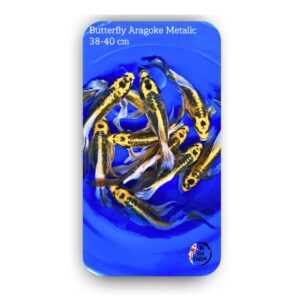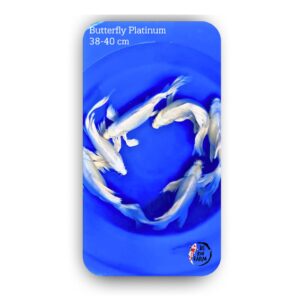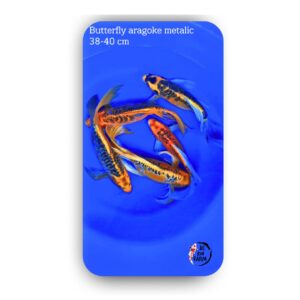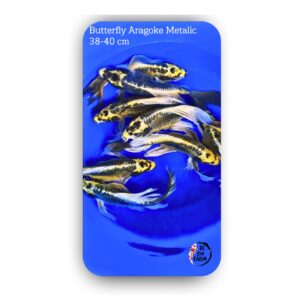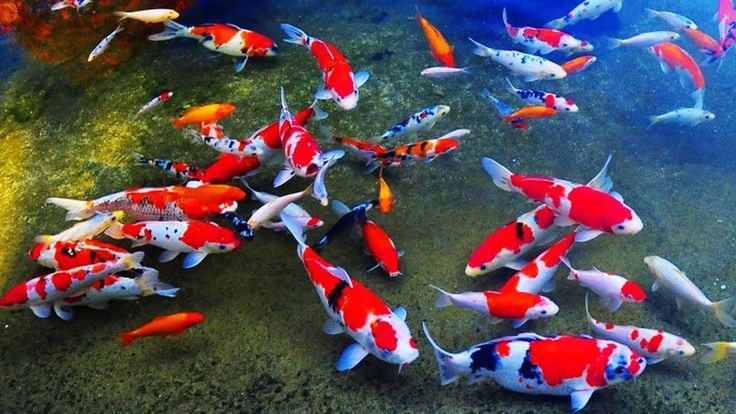
One type of Koi fish which has red and black colors with a white base is known as Taisho Sanshoku or popularly known as ‘Sanke’. The word ‘Sanshoku’ in Japanese means ‘3 colors’, and ‘Taisho’ is taken from the name of the Japanese Emperor when this Koi became popular, namely during the Taisho Era (1912 – 1926). It is not known for certain how it was first discovered, but it is estimated that it was in the middle of the Meiji Era, namely around the 1900s.
At first, the combination of red, black and white color patterns on Sanke still looked separate, unlike what it is now. Then Eizaburo Hoshino from the Takezawa area was the first to cultivate Sanke until it became better. Sanke was developed more seriously by using several selected parents to produce the Jinbei, Torazo and Sadazo blood lines.
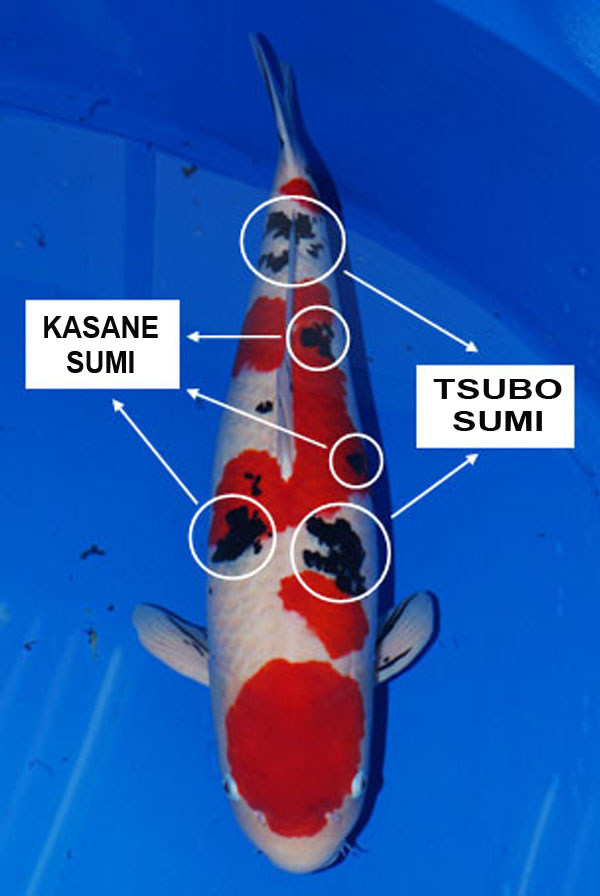
Koi Sanke Characters:
1. The red pattern (hi) on Sanke is the same as on Kohaku. So to assess the quality of the red pattern on Sanke follow the rules on Kohaku.
2. The black pattern (sumi) is minor, relatively less in proportion than the red color. Usually in the form of spots or if they form a pattern it is not as wide as the red pattern. Sumi that is thick, shiny and on white or known as Tsubo Sumi is preferred. Meanwhile, the black on red color is called Kasane Sumi.
3. Like a painting, the white color in Sanke is the base. The snow white color is one of the dominant factors in determining the quality of Sanke. In various Koi contests, Sanke, with its snow-white color, often emerges as the winner. It’s not easy to find Sanke with a white color that is as white as snow, but this is the main consideration in choosing quality Sanke.
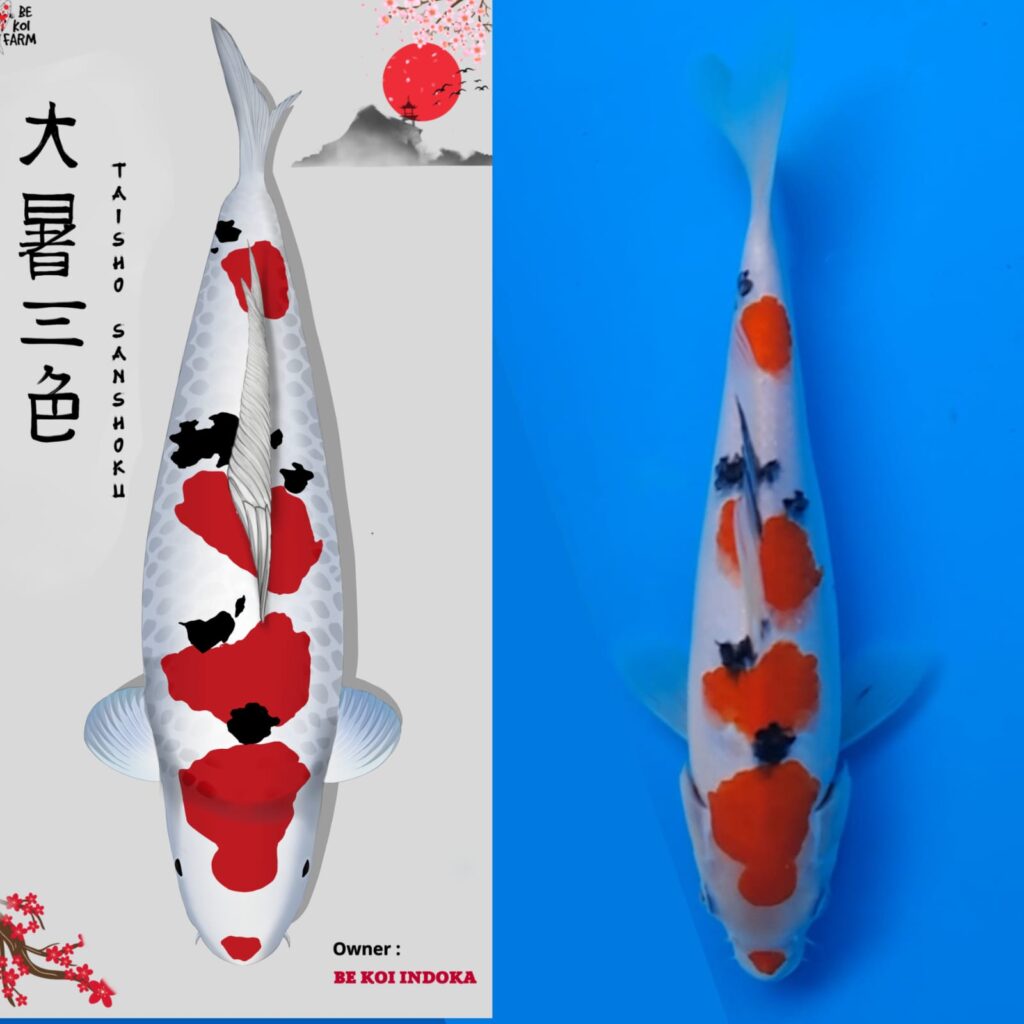
If these three colors blend from the head to the tail, it will look like a Kohaku pattern with black as an accent or balance. For example, if there is a red pattern that extends to the left side of the Koi’s back area, then black is the balance. Sometimes you need a black pattern like a footprint that makes Sanke’s appearance even more elegant.
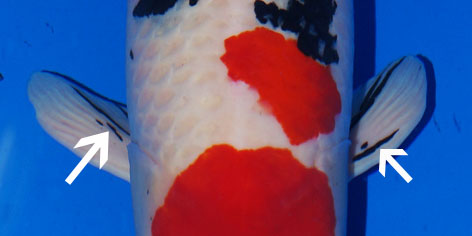
Ideally, Sanke has fins that are free from red and have 2 or 3 black lines or known as ‘Tejima’. The fewer the lines, the more elegant it looks.Tejima on both Koi fins that are completely the same, both in shape and number, are very rare or even non-existent. Tejima also serves as a balance to the overall pattern.In general, Tejima is found on one of the Sanke’s fins, but this does not mean that every Sanke always has Tejima.
Types of Sanke Koi Patterns

